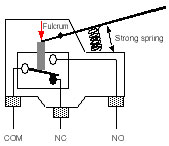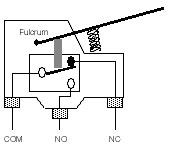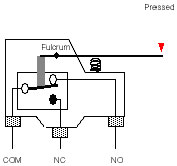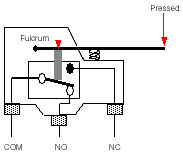What type of operation does the reverse-operation Z-15GM[][] Basic Switches perform?
As the following figure shows, the Actuator fulcrum is in a different position from that of the standard Switches, so the internal movement is reversed.
Even in the free position, the pin plunger is continuously pressed by the repelling force of the strong, compressed coil spring, making reverse-type models highly vibration and shock resistive.
| Reverse-operation Models | Standard Models | |
| Free position condition |
 |
 |
| Pressed condition |
 |
 |